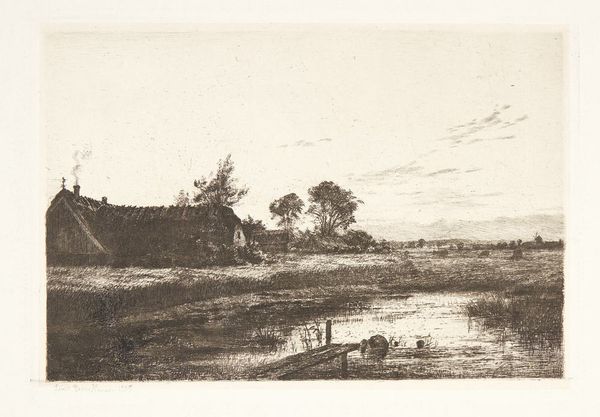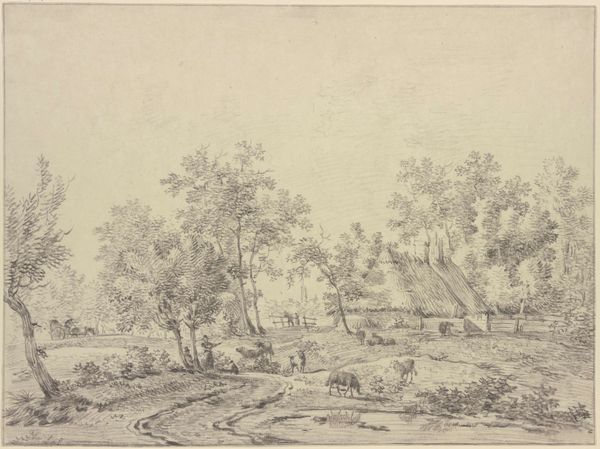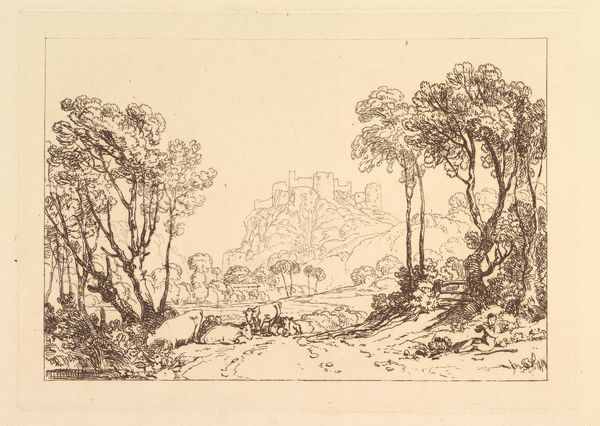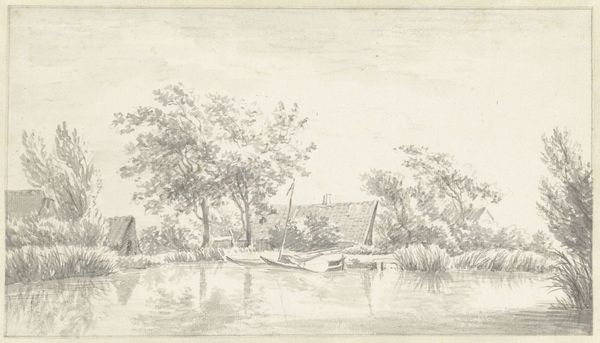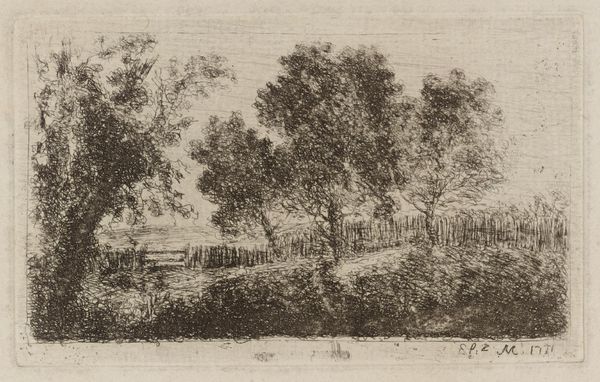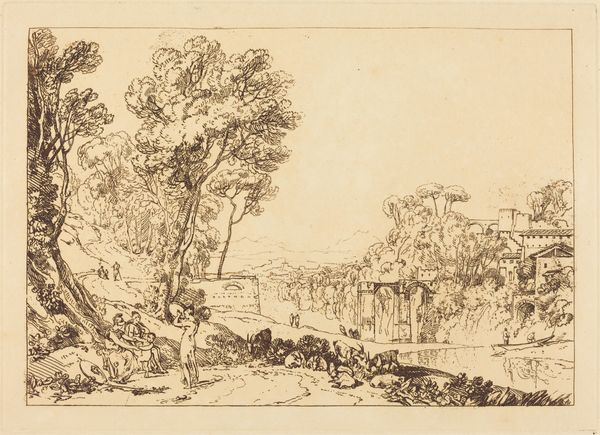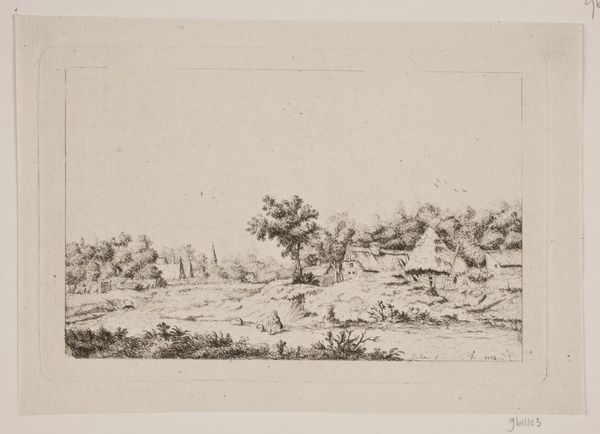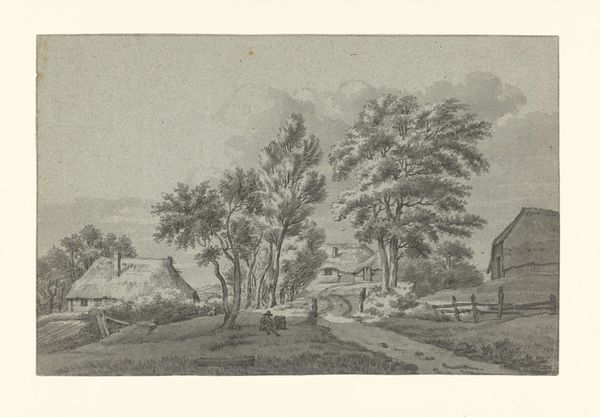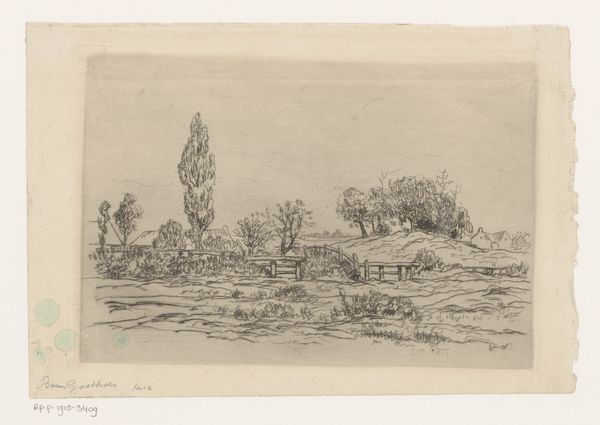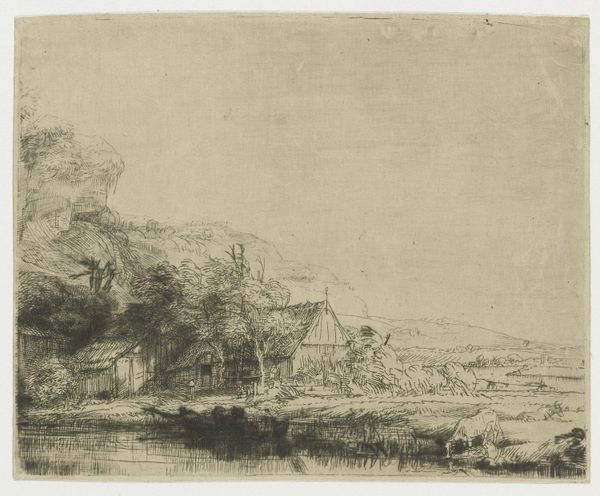
print, etching
# print
#
etching
#
landscape
#
genre-painting
Copyright: National Gallery of Art: CC0 1.0
Editor: This is Anthonie Waterloo's etching, "Rider and Flock on a Bridge." It's a serene landscape, almost melancholic in its quiet depiction of rural life. What stories do you see unfolding within this composition? Curator: This seemingly simple landscape reveals so much about power structures and our relationship to the natural world. Notice the rider, elevated on horseback, and the flock being directed across the bridge. How might we interpret the implications of their movement and positioning? Editor: I suppose there’s an implied power dynamic between the rider and the animals, the direction and purpose seem imposed. What about the bridge itself, how does infrastructure shape these interactions? Curator: Exactly. The bridge is not merely a functional object. It is a structure that facilitates movement and control, embodying the imposition of human will upon the land. The idyllic scene belies a deeper story about labour, animal agency, and environmental modification, all themes relevant to contemporary dialogues about sustainability and social justice. How do the subtleties of the etching technique reinforce these themes for you? Editor: Now that you mention it, the fragility of the lines almost suggests a tentative relationship to nature. It's beautiful, but maybe also points to its vulnerability. Curator: Precisely! By examining these 'minor' landscapes, we uncover critical narratives. Editor: I hadn’t thought of landscape art in terms of power before. This has completely changed how I will see these works from now on! Curator: Indeed. Art offers complex commentary on the social and political landscapes we inhabit.
Comments
No comments
Be the first to comment and join the conversation on the ultimate creative platform.
